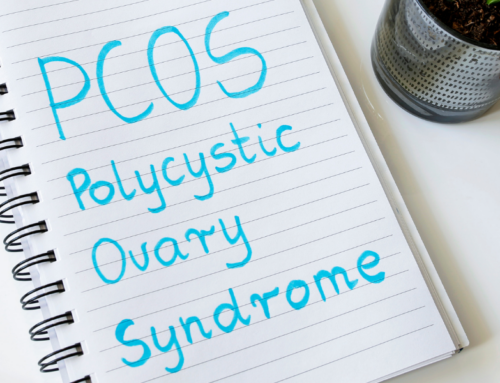September is Polycystic Ovary Syndrome (PCOS) Awareness Month.
In line with this, we at Sinaya Cup would like to share valuable information about this health problem that affects 1 in 10 women of childbearing age.

PCOS is a serious health problem caused by reproductive hormone imbalance. It has been linked to irregular periods and infertility because of how it messes with the ovaries.
“Poly” means “many,” while “cystic” means “cysts.” The syndrome is called this way because individuals affected by it may have enlarged ovaries that have many small cysts inside them.
This happens when, during a menstruator’s cycle, an egg grows in a sac known as a follicle. Located inside the ovaries, this sac is supposed to break open in order to release the egg.
However, due to hormonal imbalance, this may not occur. Instead, the fluid inside the sac can form a cyst.

However, this doesn’t mean that people with PCOS can no longer get pregnant. Although it is the most common cause of fertility, it is treatable. Doctors can help find ways to help a patient ovulate and even increase the risk of getting pregnant.
All women, regardless of ethnicity, are at risk of PCOS. However, individuals with obesity, as well as those with moms, sisters, and aunts affected by the condition have a higher risk of having it.
Although most women learn about their condition in their 20s or 30s or by the time they have difficulties getting pregnant, PCOS can actually happen at any age after one hits puberty.
Its symptoms contain the following:
- Irregular menstrual cycle – Women affected by PCOS may have fewer periods within the year. Some, however, have more periods than usual.
- Heavy bleeding – Many people with PCOS often complain about their flow being heavier than normal.
- Too much or thinning hair – Up to 70% of individuals affected by PCOS have hirsutism, a condition defined by the growth of too much hair on the face, chin, as well as other parts of the body where men usually grow hair. But there are those who experience hair loss on the scalp or even male-pattern baldness.
- Acne – Having acne on the face, chest, and upper back can also be a sign that one has PCOS.
- Weight gain or difficulty in losing weight – Another common symptom linked to PCOS is weight gain. Many of those with this health problem also have a hard time managing their weight, especially if they wish to reduce it.
- Darkening of skin – One who has PCOS may also experience darkening of the skin, especially along neck creases, underneath breasts, or in the groin. Darkening of the skin is usually associated with obesity, as well as resistance to insulin.
- Skin tags – Tiny excess skin flaps in the neck or armpit area may also occur.
The real cause of PCOS has puzzled experts for many years. Although, it has been linked to the following:
- High levels of androgens – Women make small amounts of androgens, even if it’s known as “male hormones.” This hormone is mainly responsible for developing male traits, such as male-pattern baldness. Women who have PCOS, on the other hand, have higher levels of androgens than normal. This keeps the ovaries from releasing an egg during ovulation. It can also cause abnormal hair growth and acne, which are two indications of PCOS.
- High levels of insulin – Insulin is well-known for controlling how the food we eat is transformed into energy. A huge number of people affected by PCOS have insulin resistance, so their body’s cells don’t respond to insulin as expected. This leads to the rise of insulin blood levels and may lead to more complicated health problems like type 2 diabetes. Being overweight or obese, having unhealthy eating habits and no exercise, and having a family history of diabetes can put someone at a higher risk of having insulin resistance.
A recent study published in Nature also made noise for its contribution to the still ongoing quest to have a better understanding of this syndrome.
Do you have symptoms of PCOS? Please be reminded that in order to get diagnosed, you need to see a doctor.

Image by Schomynv on Wikimedia Commons
You may need to disclose your medical history and undergo a physical exam, along with other necessary tests.
Procedures may include a pelvic exam, pelvic ultrasound, and blood tests.
With the help of a medical professional, you will also find out how you can manage your symptoms since there is no cure for them.







